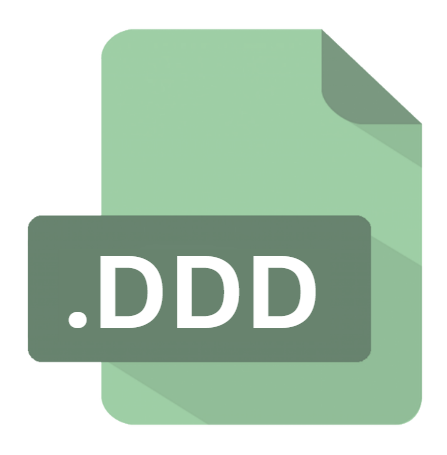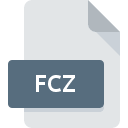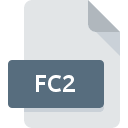.DDD File Extension

GLBasic 3D Data File
| Developer | Dream Design Entertainment |
| Popularity | |
| Category | 3D Image Files |
| Format | .DDD |
| Cross Platform | Update Soon |
What is an DDD file?
The .DDD file extension is associated with GLBasic, a versatile programming language tailored for game development.
GLBasic allows developers to create games and interactive applications across various platforms, including Windows, macOS, and mobile devices.
The .DDD file extension specifically refers to a GLBasic 3D Data File, which plays a critical role in managing and representing 3D models within the GLBasic environment.
More Information.
The .DDD file format was introduced to address the need for a straightforward and effective method of handling 3D assets in game development.
Prior to the adoption of .DDD files, developers often relied on more complex and less intuitive formats for 3D data management.
The .DDD file format aimed to simplify this process by offering a streamlined way to encapsulate 3D data within GLBasic projects.
This approach helped in reducing the development time and effort required for managing 3D models, thereby enhancing the overall productivity of game developers using GLBasic.
Origin Of This File.
GLBasic, developed by Giorgio Zoppi and initially released in 2002, is designed to simplify the process of game development through its easy-to-learn BASIC-like syntax.
It caters to both novice and experienced developers by providing an integrated development environment (IDE) and an array of tools for game creation.
The .DDD file extension emerged as part of GLBasic’s efforts to handle 3D data efficiently. These files are primarily used to store information related to 3D models, including their geometry, textures, and animations.
File Structure Technical Specification.
The .DDD file format is designed to store 3D model data in a structured manner. Here’s a breakdown of its typical components:
- Header: The header section contains metadata about the file, including version information, file size, and a brief description of the contents.
- Geometry Data: This section includes information about the vertices, edges, and faces of the 3D model. It defines the shape and structure of the model.
- Texture Data: This part holds details about the textures applied to the 3D model, such as texture coordinates and image references.
- Animation Data: If the model includes animations, this section stores information about the animation sequences, keyframes, and other relevant details.
- Metadata: Additional information about the model, such as author details, creation date, and other attributes, may be included.
The technical specification of .DDD files is tailored to be compatible with GLBasic’s internal data structures. This design allows for efficient parsing and rendering of 3D models within the GLBasic engine.
How to Convert the File?
Converting .DDD files to other formats can be challenging due to their proprietary nature. There are some approaches you can take:
- Using GLBasic Tools: GLBasic provides some tools and utilities that might help in exporting .DDD files to other formats supported by the GLBasic IDE.
- Custom Scripts: Developers with scripting skills can create custom scripts to parse .DDD files and convert them to more widely accepted formats, such as
.OBJor.FBX. - Third-Party Converters: While rare, there may be third-party conversion tools or utilities that support .DDD files. These tools might require careful handling and validation to ensure compatibility and data integrity.
- Manual Conversion: In cases where automated conversion is not feasible, manually extracting the data from .DDD files and reconstructing it in a different format using 3D modeling software can be an option. This approach is labor-intensive and may require a deep understanding of the file’s structure.
Advantages And Disadvantages.
Advantages:
- Simplicity: The .DDD file format is designed to be simple and easy to use, making it accessible for developers at all skill levels.
- Integration: As a native format for GLBasic, .DDD files integrate seamlessly with the GLBasic development environment, ensuring smooth workflows and efficient asset management.
- Efficiency: The structured nature of .DDD files facilitates efficient data retrieval and rendering, contributing to optimized performance in GLBasic applications.
Disadvantages:
- Limited Compatibility: The .DDD file format is specific to GLBasic, limiting its compatibility with other game development environments and tools.
- Proprietary Nature: The proprietary nature of .DDD files means that they are not widely supported outside the GLBasic ecosystem, which can pose challenges for developers working in multi-platform environments.
- Complexity in Conversion: Converting .DDD files to other formats may require specialized tools or custom scripts, which can be cumbersome and time-consuming.
How to Open DDD?
Open In Windows
- GLBasic IDE: The primary method for opening .DDD files on Windows is through the GLBasic IDE. The IDE is designed to handle .DDD files natively and provides tools for managing and viewing 3D models.
- 3D Modeling Software: If you need to view or edit .DDD files outside GLBasic, you may need to use 3D modeling software that supports custom file formats. Conversion tools or plugins may be necessary.
Open In Linux
- GLBasic IDE: As GLBasic provides cross-platform support, you can use the GLBasic IDE on Linux to open and work with .DDD files.
- Custom Solutions: Due to the proprietary nature of .DDD files, Linux users may need to rely on custom solutions or community-developed tools for viewing and converting these files.
Open In MAC
- GLBasic IDE: GLBasic also supports macOS, allowing you to open and manage .DDD files using the GLBasic IDE on Mac systems.
- Conversion Tools: For macOS users, converting .DDD files to other formats may require specialized tools or custom scripts. Ensure that the tools you use are compatible with macOS.












